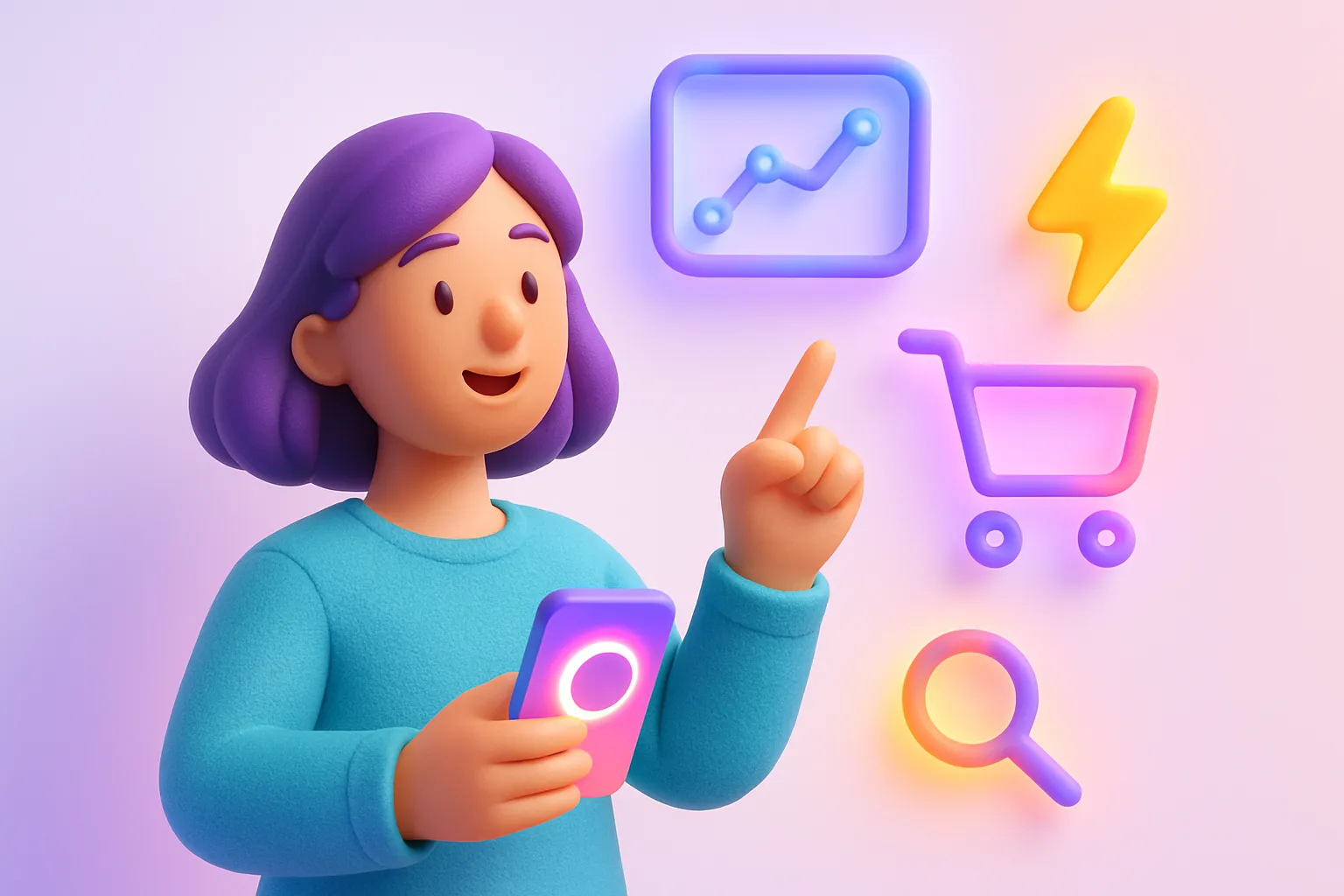AI-Powered Visual Search: Transforming E-Commerce Product Discovery

Why Visual Search Matters Right Now
Typing “black shoes with white soles” feels clunky when you can snap a photo and get the exact pair in seconds. That simple swap , image instead of text , is the promise of AI-powered visual search. For online stores, it shrinks the gap between inspiration and purchase, lifting both engagement and revenue.
Benefits for E-Commerce Platforms
- Higher conversion rates: Shoppers who use visual discovery tools convert 5.8 times more often and spend 16% more per order (source).
- Fewer zero-result pages: Images capture style, color, and shape that keywords miss, so the search engine always has something relevant to show.
- Sticky user engagement: Alibaba’s Pailitao pulls in more than ten million daily visitors who keep scrolling because results feel personal (source).
- Stronger long-tail coverage: Visual queries surface niche SKUs that rarely rank for text search, giving older inventory a second life.
How Visual Search Lifts Customer Experience
Great shopping journeys remove friction. Visual search tackles three common pain points.
- Hard-to-describe items: Patterns like “boho floral midi dress” vary by user vocabulary. An image is universal.
- Personalization on style, not words: Image embeddings capture subtle aesthetics, so recommendation models can suggest pieces that “feel” similar even if tags differ.
- Out-of-stock rescue: When an item disappears, the engine can instantly surface the closest visual match, saving the sale (source).
Implementing Visual Search Technology
Core Building Blocks
- Image ingestion: Collect high-quality product photos from your catalog and normalize sizes.
- Feature extraction: Use deep learning models (e.g., ResNet, CLIP) to turn each image into a fixed-length vector.
- Indexing: Store vectors in a similarity search engine like FAISS or Milvus for fast nearest-neighbor lookups.
- Front-end widget: Let shoppers upload photos, paste URLs, or pick screenshots from mobile cameras.
Build vs Buy
JD.com’s in-house system handles hundreds of billions of images with sub-second latency (source). Most stores do not need that scale. If you process fewer than ten million SKUs, a managed API from AWS Rekognition, Google Vision Product Search, or a specialized vendor is faster to launch.
Practical Tips for Launch
- Start with your highest-margin categories to prove ROI before a full rollout.
- Label at least one hero image per SKU; lifestyle shots confuse feature extractors.
- Measure success by “search-to-add-to-cart” rate, not just clicks.
- Plan weekly re-indexing so new arrivals and sold-out items stay current.
Case Studies in Action
- Alibaba Pailitao: Ten million daily visitors browse everything from dresses to electronics via photos, reinforcing the platform’s reputation for discovery (source).
- Pinterest Lens: Processes roughly 600 million visual searches a month, with click-through rates that dwarf text queries on mobile (source).
- Perplexity Snap to Shop: Blends conversational AI and visual search so users can ask follow-up questions after uploading an image, then pulls real-time product data from Shopify stores (source).
- JD.com: Runs a distributed hierarchical index to refresh billions of images daily, proving that visual search scales without crippling latency (source).
Future Trends to Watch
- On-device inference: Apple and Google are pushing vector search to mobile chips, making “snap to shop” feel instant and private.
- Augmented reality try-ons: Combine visual search with AR so shoppers can identify a couch and drop it into their living room for sizing.
- Generative fill: Models like DALL-E can imagine missing parts of an uploaded image, widening the match pool when photos are cropped or blurry.
- Multi-modal chat: Users will drop an image into a chatbot, ask “got this in vegan leather?” and get back shoppable results plus fitting advice.
Related Reading: AI Innovations Heading into 2025
Our piece AI-Powered Innovations Reshaping E-Commerce in 2025 dives deeper into visual search and augmented reality, showing how uploading a café chair photo can instantly surface similar SKUs. If you are mapping out a broader AI roadmap beyond search, from fraud detection to supply-chain forecasting, you will find a practical checklist there.
Key Takeaway
Visual search turns inspiration into intent without making customers spell out what they see. Start small, track real conversion lifts, and scale once the numbers speak for themselves. The early adopters already enjoy bigger baskets and happier shoppers. Your catalog could be next.



